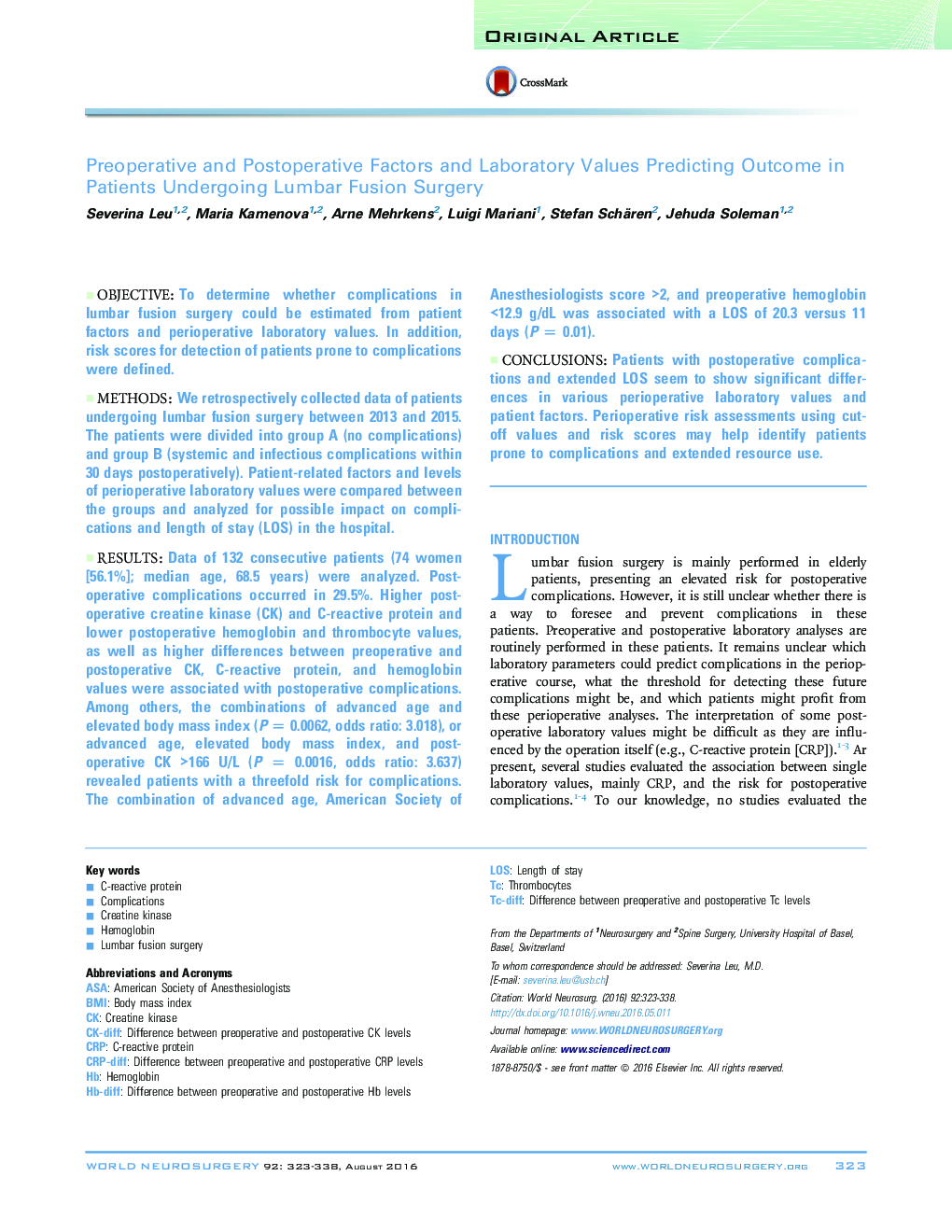| کد مقاله | کد نشریه | سال انتشار | مقاله انگلیسی | نسخه تمام متن |
|---|---|---|---|---|
| 3094718 | 1581463 | 2016 | 16 صفحه PDF | دانلود رایگان |
ObjectiveTo determine whether complications in lumbar fusion surgery could be estimated from patient factors and perioperative laboratory values. In addition, risk scores for detection of patients prone to complications were defined.MethodsWe retrospectively collected data of patients undergoing lumbar fusion surgery between 2013 and 2015. The patients were divided into group A (no complications) and group B (systemic and infectious complications within 30 days postoperatively). Patient-related factors and levels of perioperative laboratory values were compared between the groups and analyzed for possible impact on complications and length of stay (LOS) in the hospital.ResultsData of 132 consecutive patients (74 women [56.1%]; median age, 68.5 years) were analyzed. Postoperative complications occurred in 29.5%. Higher postoperative creatine kinase (CK) and C-reactive protein and lower postoperative hemoglobin and thrombocyte values, as well as higher differences between preoperative and postoperative CK, C-reactive protein, and hemoglobin values were associated with postoperative complications. Among others, the combinations of advanced age and elevated body mass index (P = 0.0062, odds ratio: 3.018), or advanced age, elevated body mass index, and postoperative CK >166 U/L (P = 0.0016, odds ratio: 3.637) revealed patients with a threefold risk for complications. The combination of advanced age, American Society of Anesthesiologists score >2, and preoperative hemoglobin <12.9 g/dL was associated with a LOS of 20.3 versus 11 days (P = 0.01).ConclusionsPatients with postoperative complications and extended LOS seem to show significant differences in various perioperative laboratory values and patient factors. Perioperative risk assessments using cut-off values and risk scores may help identify patients prone to complications and extended resource use.
Journal: World Neurosurgery - Volume 92, August 2016, Pages 323–338
